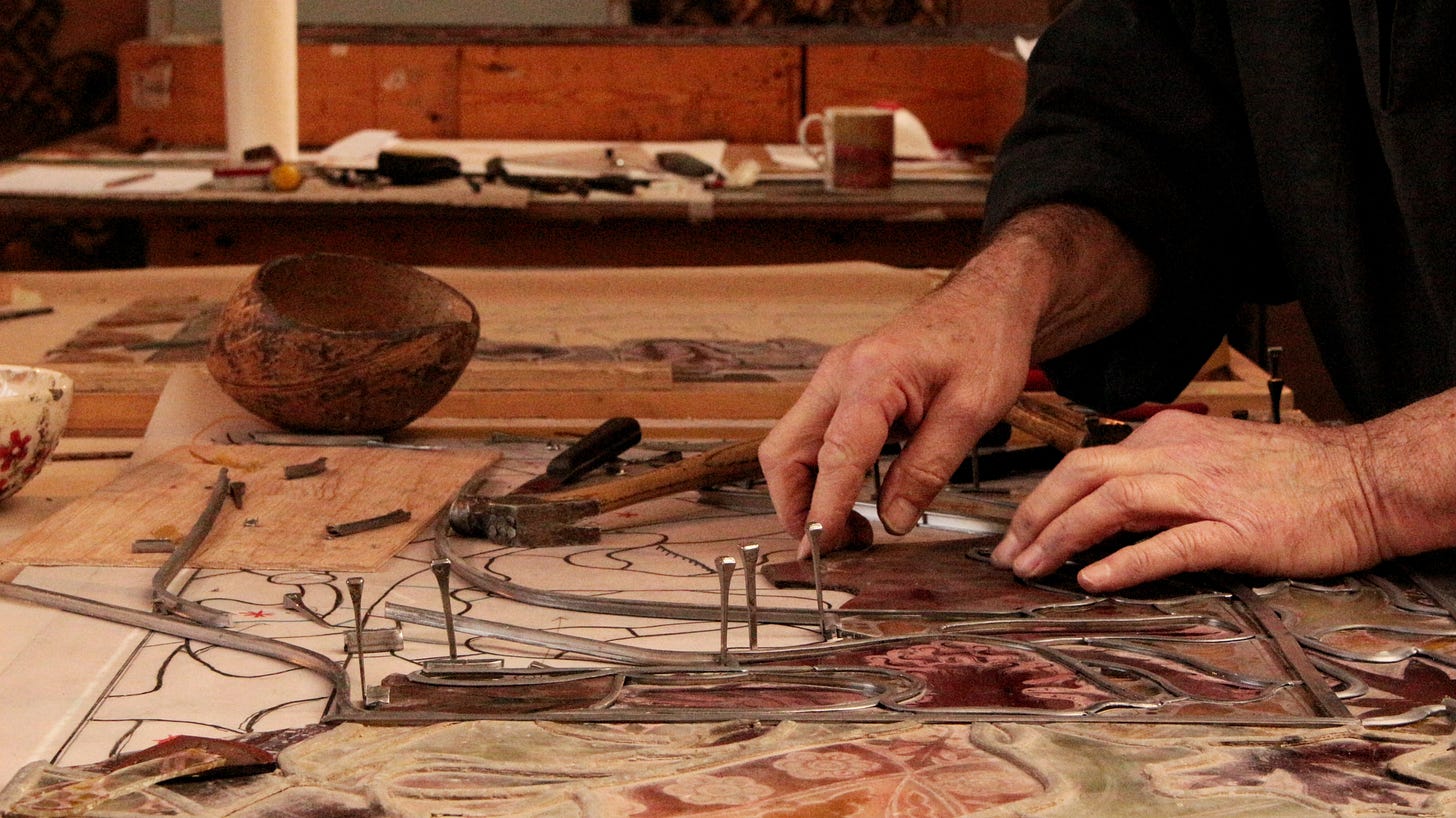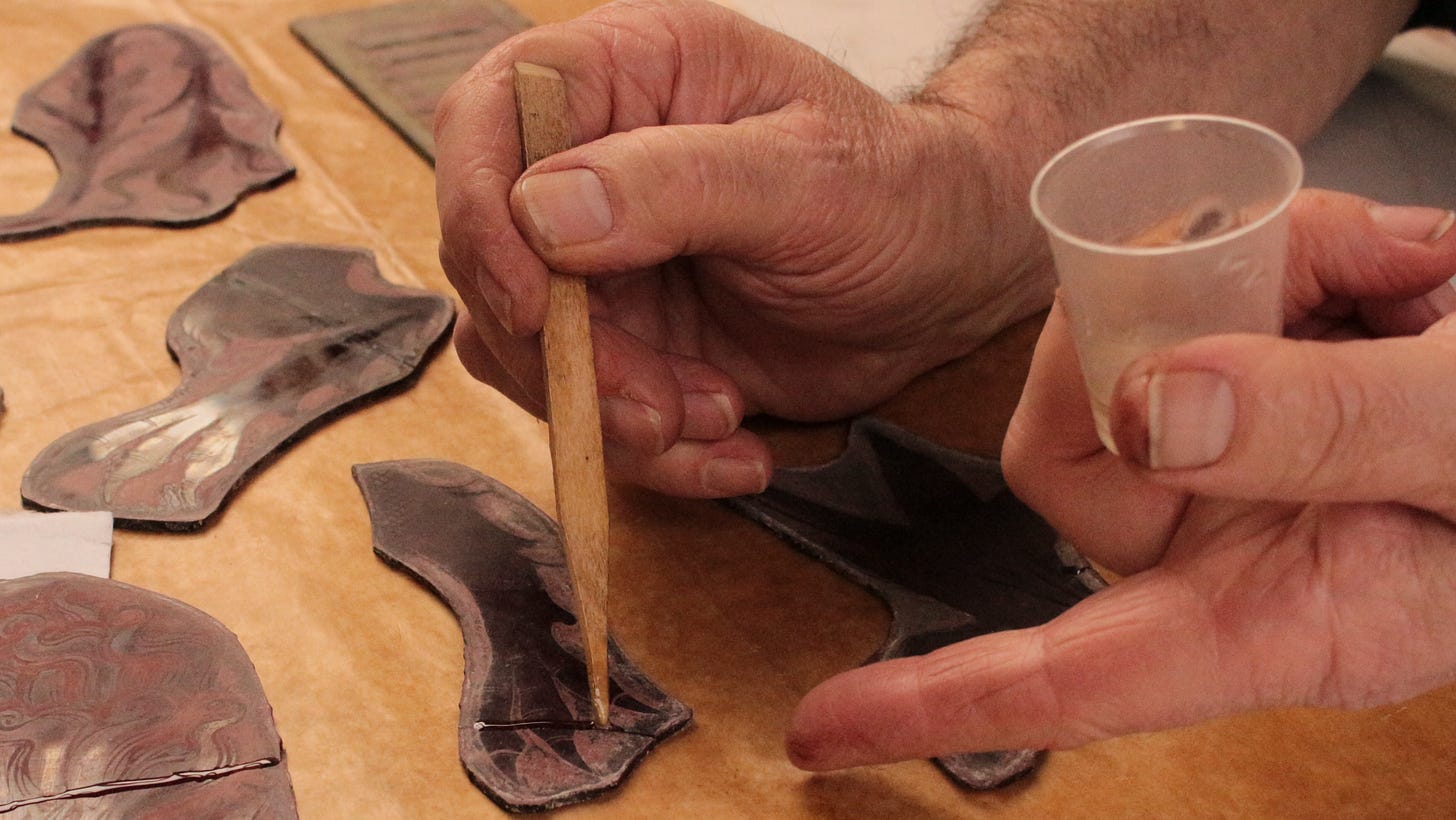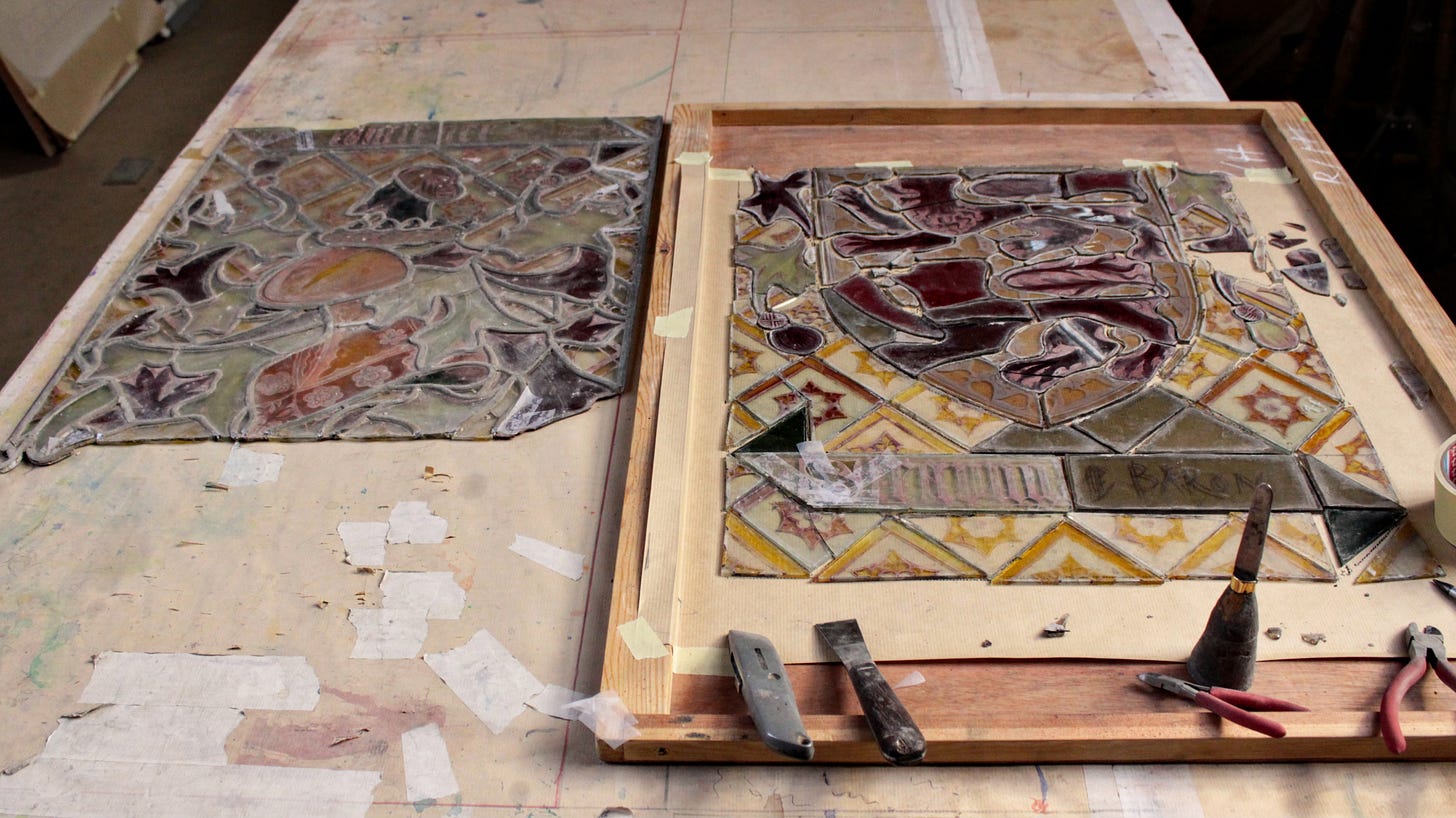The time has come for us to put the window back together. It therefore makes good sense to remember how it happened that we reached this point.
First, you saw a preview of the installation.
Then, after we had chosen a single window—strictly, a “cut”—to represent the set of 36, we jumped you back in time to watch us map the window’s dire condition, catalogue the likely kinds of intervention, make a plan to put things right and take apart the window’s lower half.
After we had re-cut a missing piece of glass and drawn a suitable design, you saw us paint and distress a fearsome lion, then paint an inscription and also stain it—both these items being stand-ins for a host of other pieces which also needed counterfeiting because they had been lost. (You can confidently infer we do not belong to that school of conservation whose members write long monographs to denounce this type of forgery. In my darker moments, when the Laudanum wears off, my informal diagnosis is that these scholars cannot paint.)
The most recent episode in our story was the tale of tens of broken pieces which glue could fix:
Thus it was that we came here—
—the lower-half now in a fit state to be re-joined with the upper-half whose leads remained strong and whose repairs we could successfully undertake with no or little damage.
The next video begins with preparation—setting out, stretching leads and so forth.
Should you wish to jump ahead, then roughly minute 3 will let you watch the leading; minute 10, the soldering: and minute 17, the puttying, cementing, picking out and polishing. Oh, yes, the polishing. See—you work up quite a glow with polishing in order that the leads are clean and almost black.
It’s a long video—nearly half-an-hour—to represent the labour of a day or so.
Yet an awful lot has been left out. Therefore don’t conclude that, because you do not see it, it did not happen. We opened all the leads, for instance, and confirmed the surviving paint was stable.
There is no commentary. This is because the purpose of this strand of letters is not to teach but to show you how we work. If the present topic or its mode of presentation is not for you, don’t carp at me but instead explore another avenue of interest—I understand, I truly do: this being the glass painter’s method, I only show you the process for completeness’ sake.
One final point: please accept our apologies for the blunt knife. It is a symbol of what happens when you make a documentary. Sometimes a process seduces you with its own momentum—besides, deadlines always press around you—and you find you do not stop to make an obvious improvement. Therefore copy anything we do that’s good, ignore everything we do that’s bad, and stop frequently to restore the sharpness of your blade.
00:00 Preparation
03:00 Leading
10:13 Soldering
16:57 Puttying, cementing, picking out, and polishing
I’ll write once more before we pause our work for Christmas—yes, Christmas, not “holiday”: this is England, and that’s how we do things here, without apology and without concern that others might take offence or feel excluded, for they are not except that they set out to imagine they are: we have a lovely part-Norman church within the village where I live, and an even lovelier one some three miles down a country track—it stands in a meadow, encircled by huge ancient oaks, where cows or sheep graze all around, depending on the season—and everyone is always welcome.
Then we’ll take a good long rest, returning only in late-January to show you samples of our several days of intervention on the leaded window’s back:
Until we speak again, I always hope your life and work go well.








I just wanted to thank you very much for these communications this year, I've found them fascinating (and they've often made me laugh.) Subscribing, I've learned a huge amount about the craft and the techniques (and some other stuff too!)
I wish you a very happy Christmas.
Dear Masters, following your writings/work is always humbling and fascinating. Always learning. Have a well deserved relax time and please enjoy whisky /gin for me!